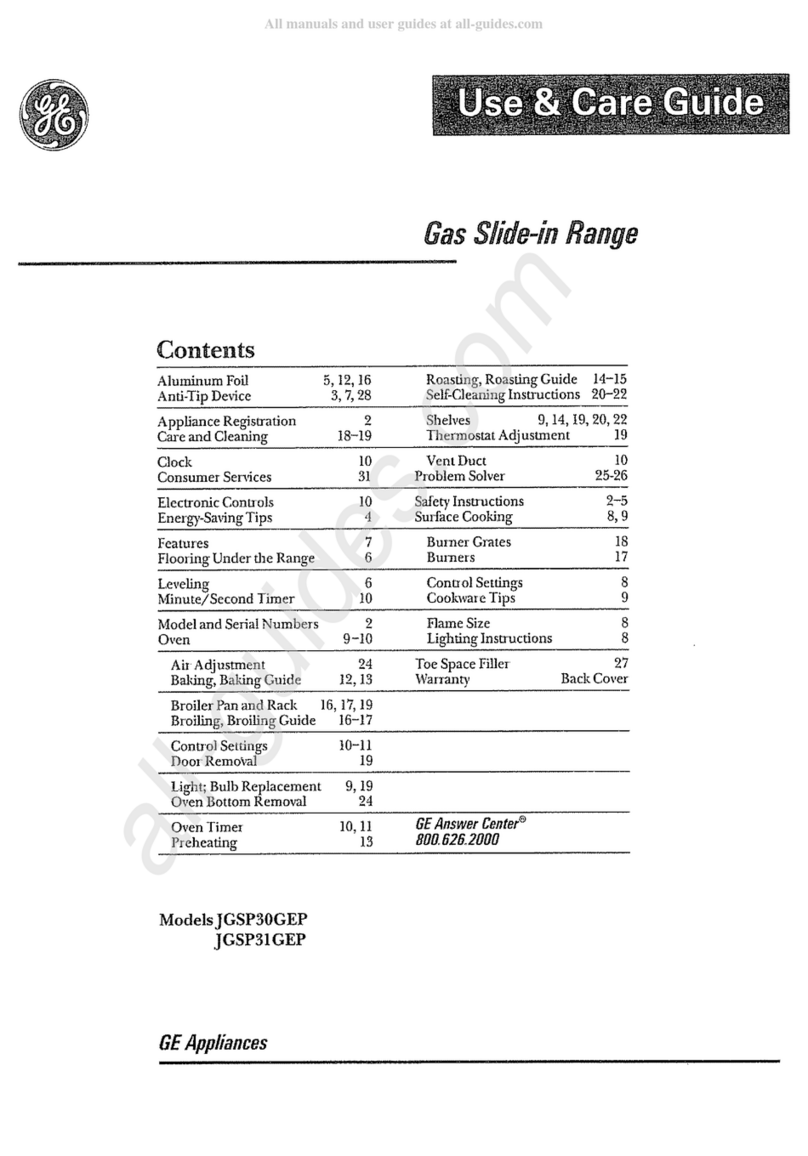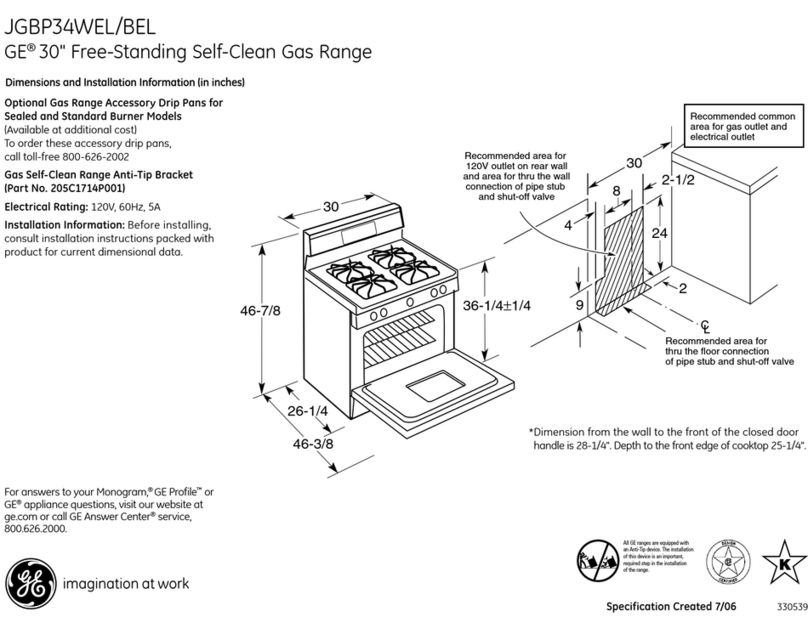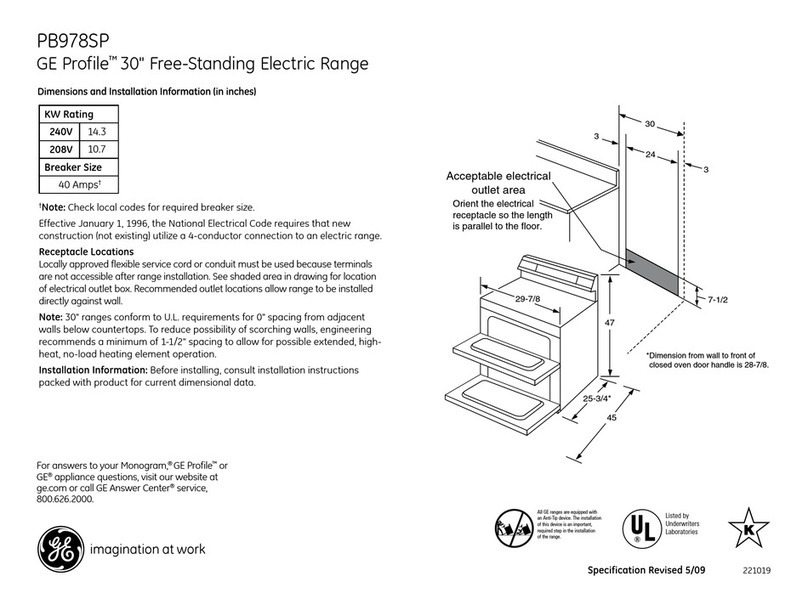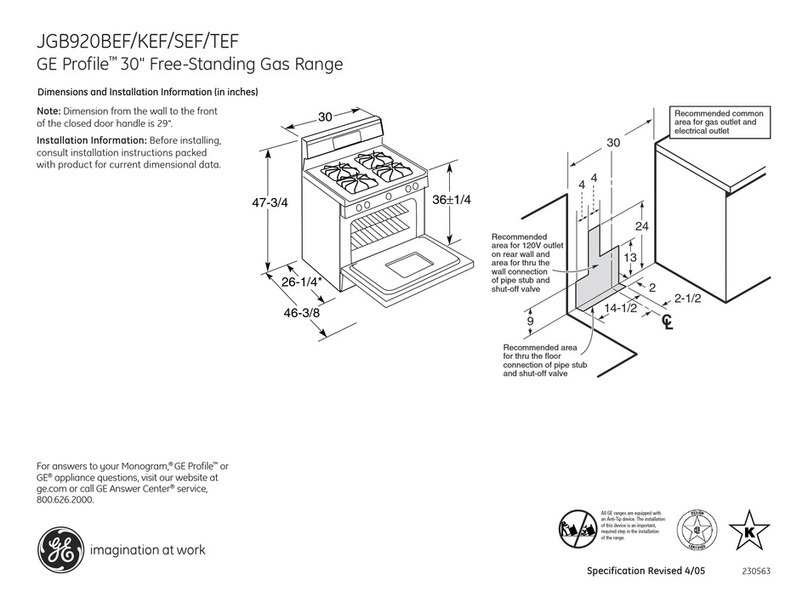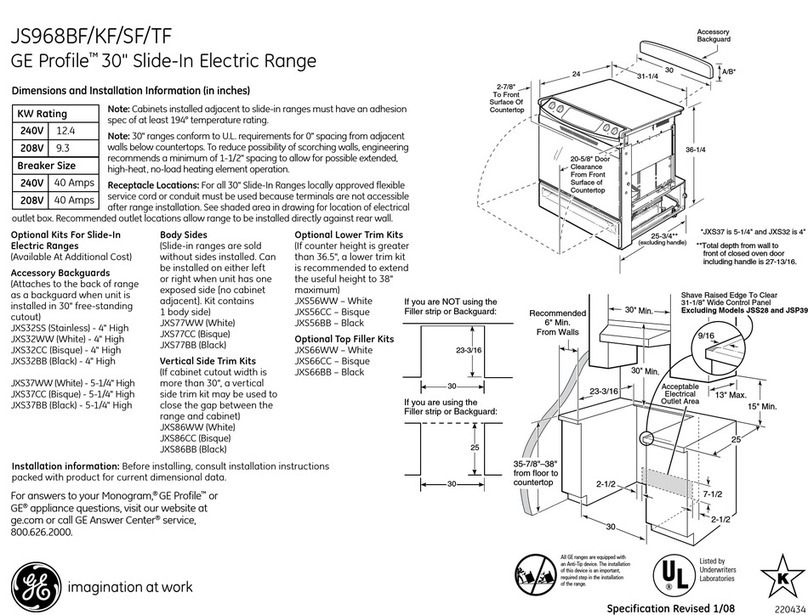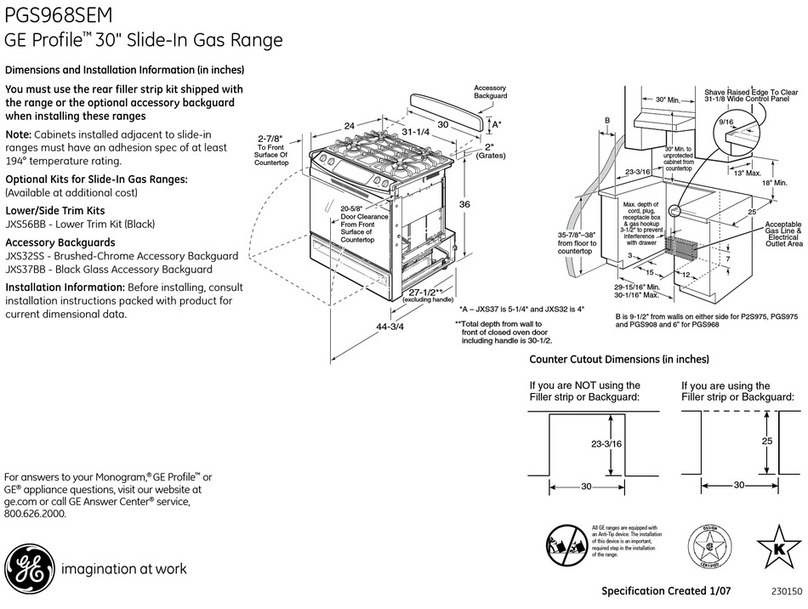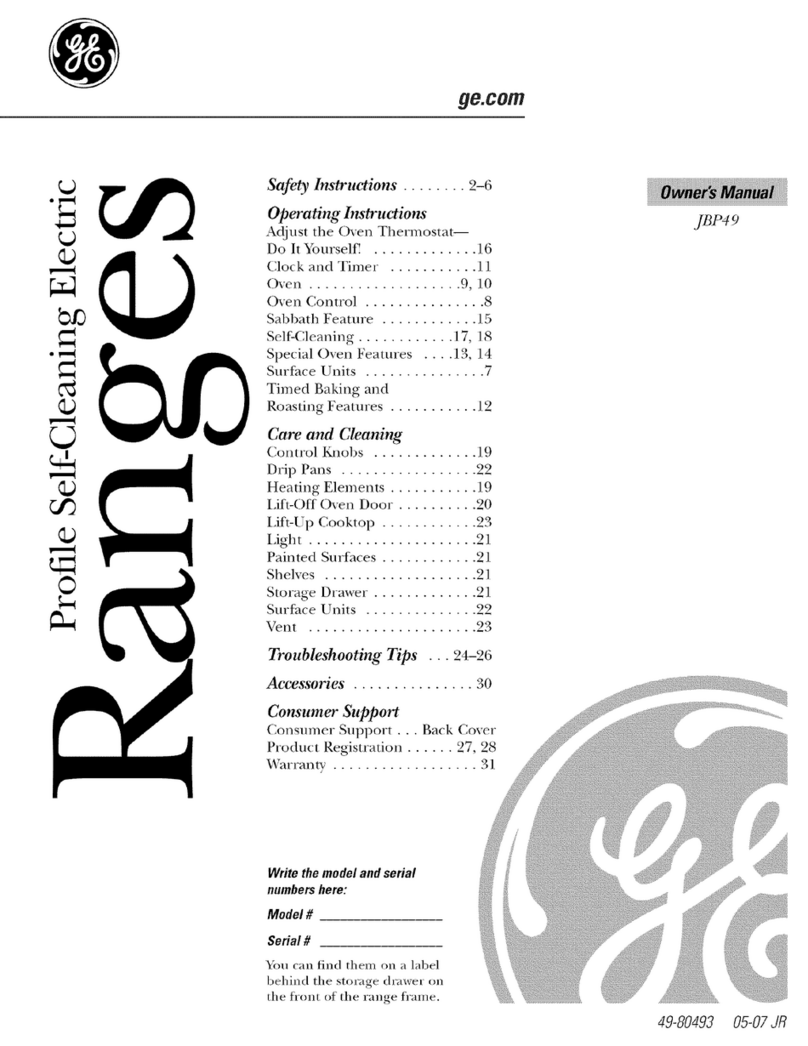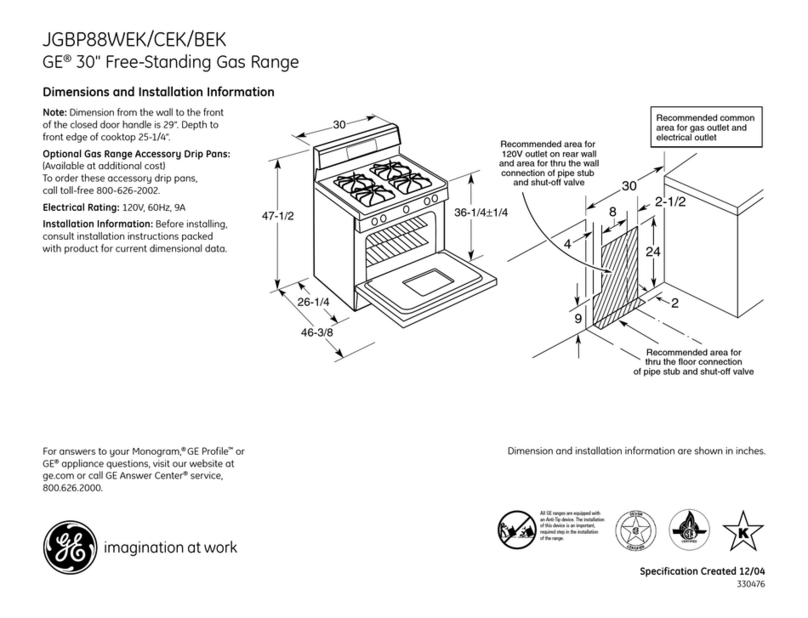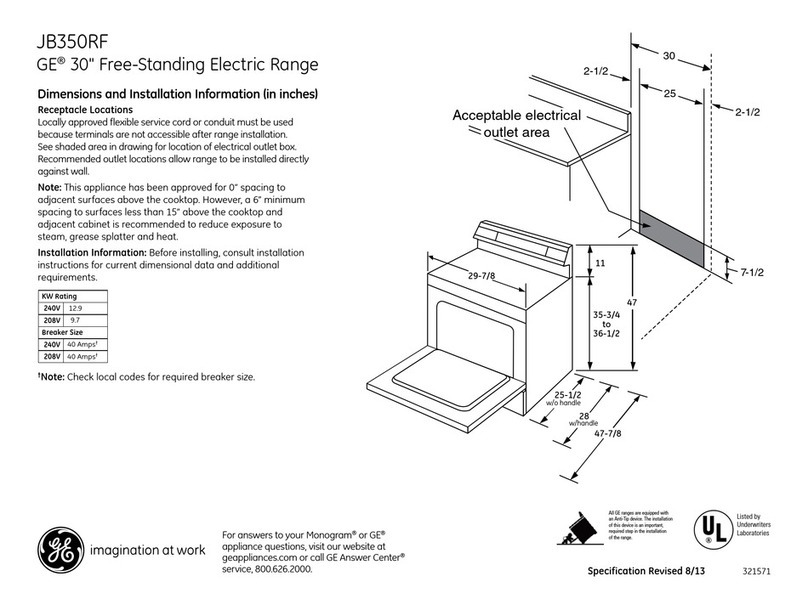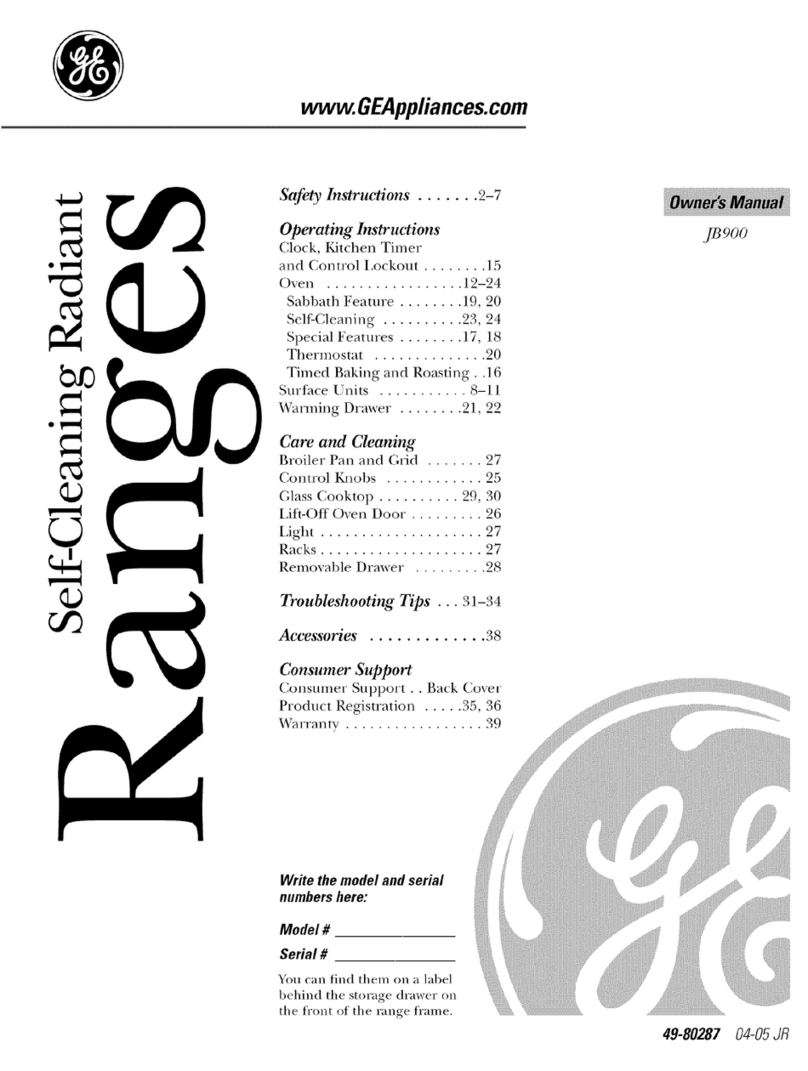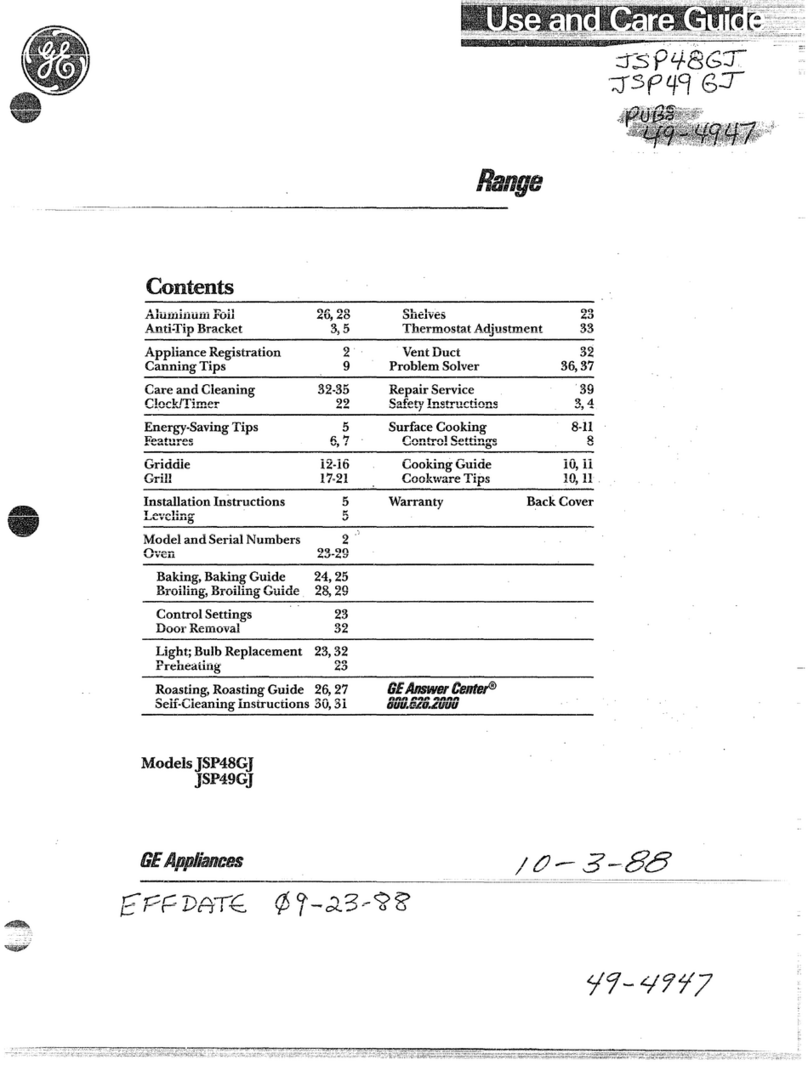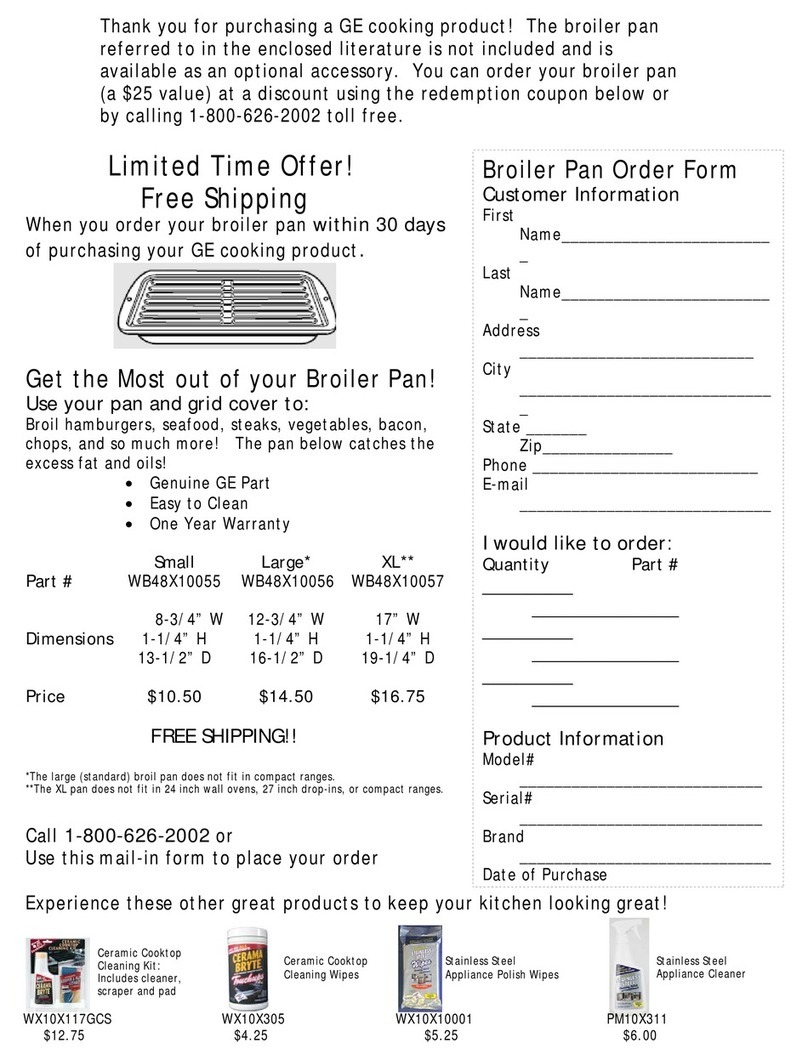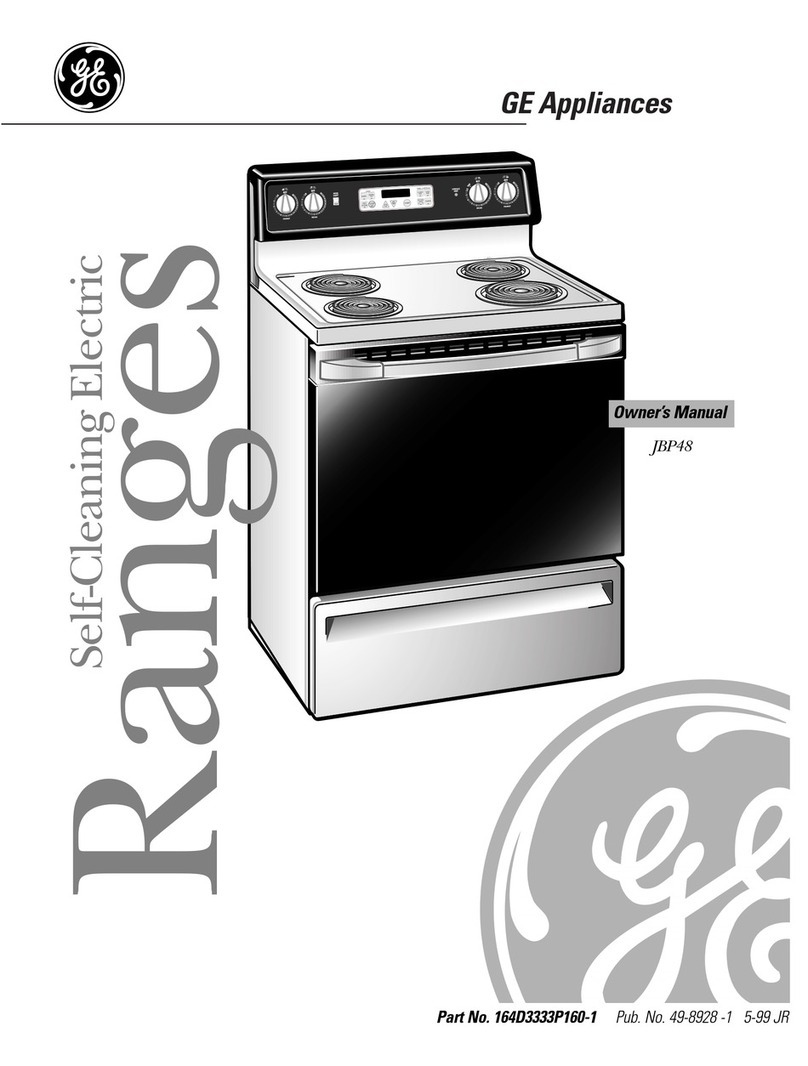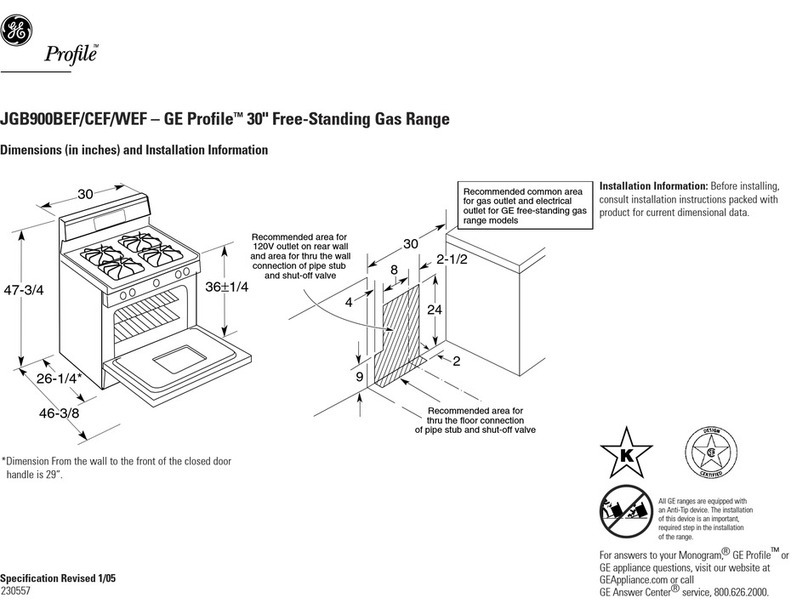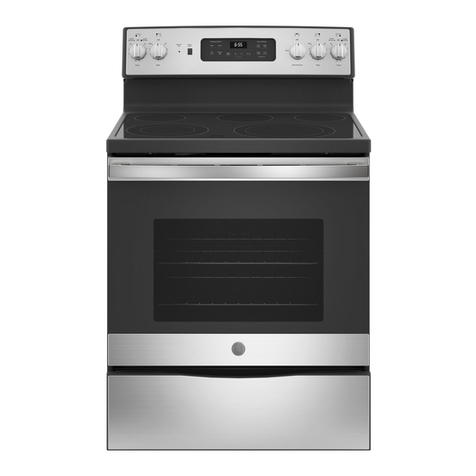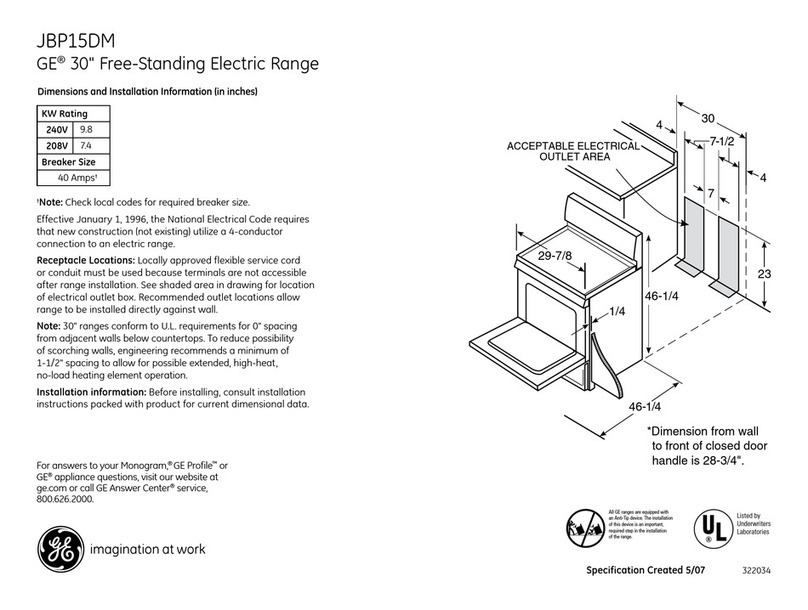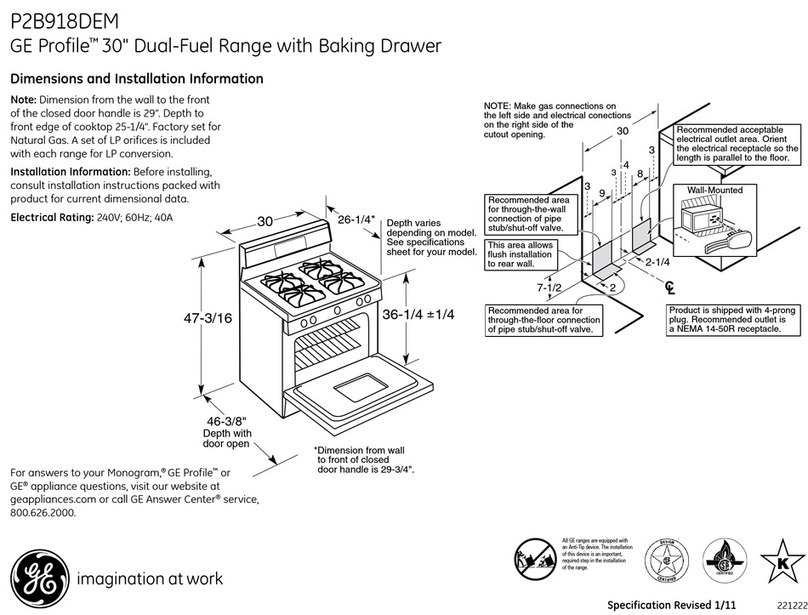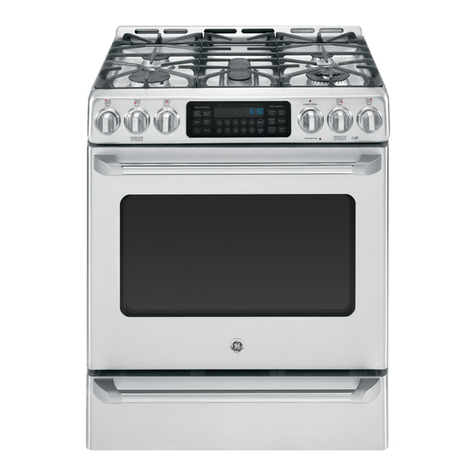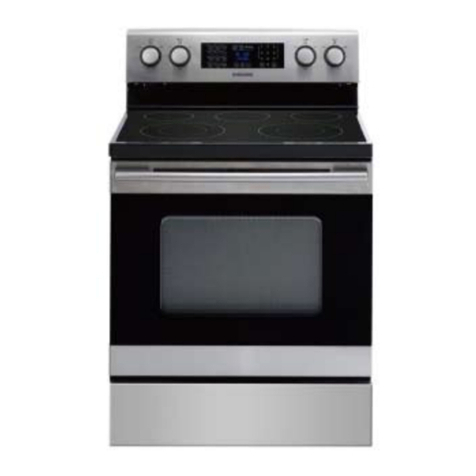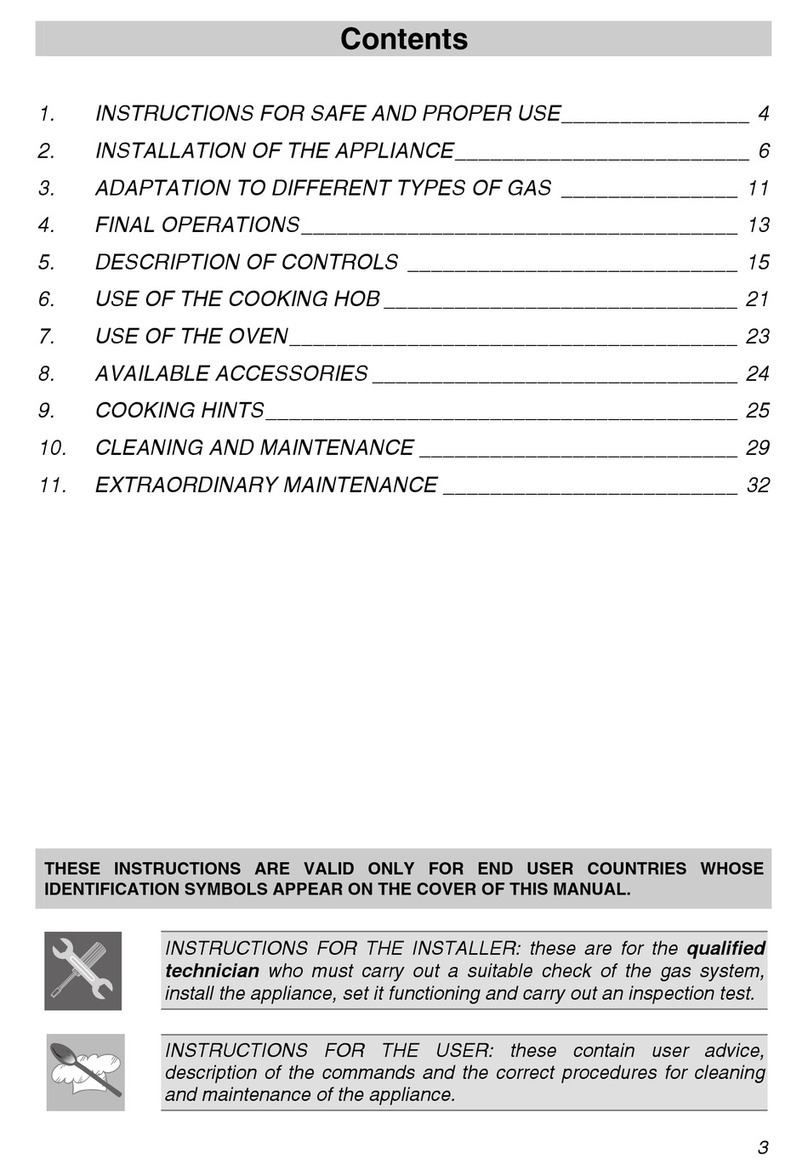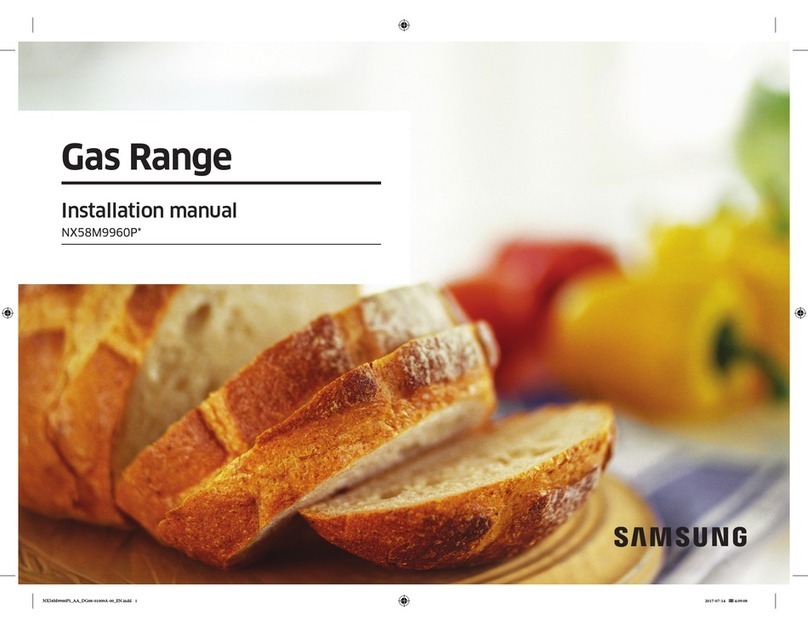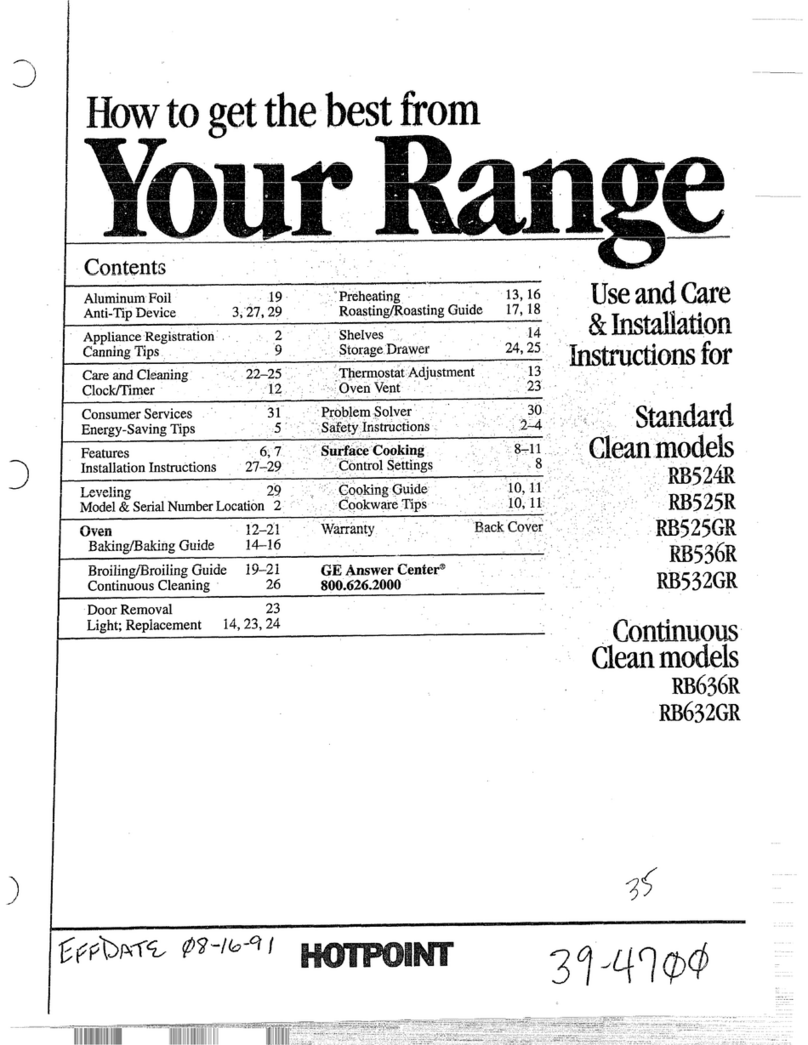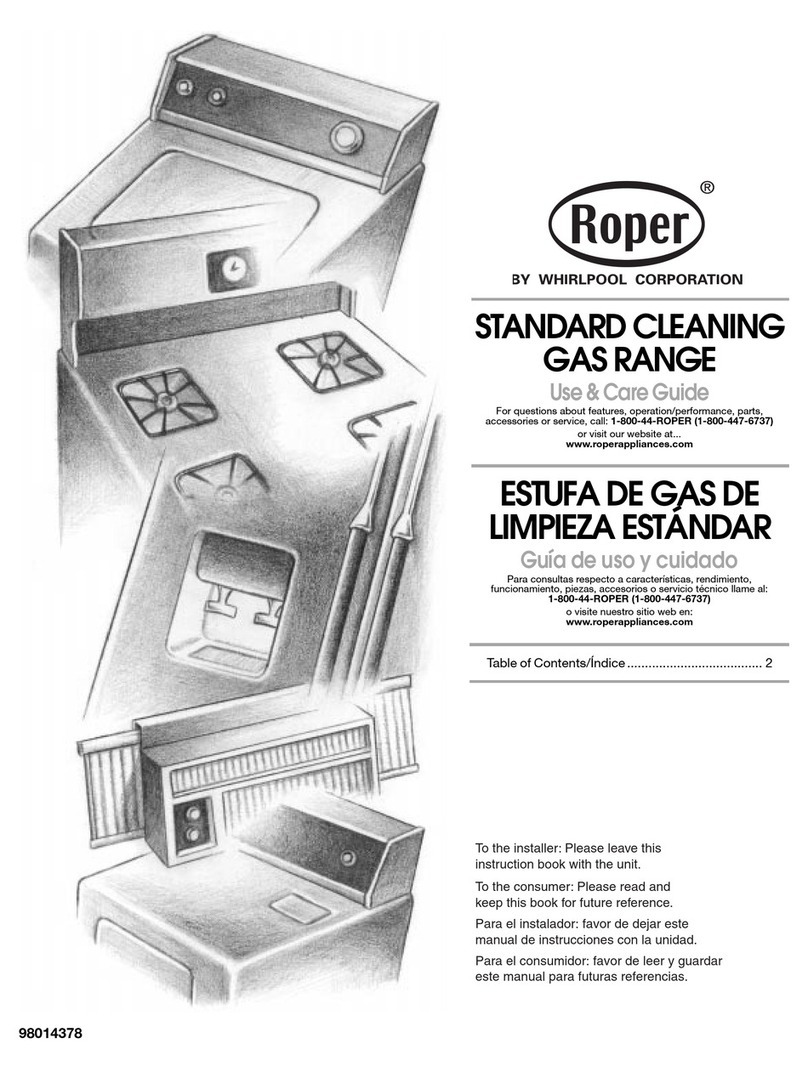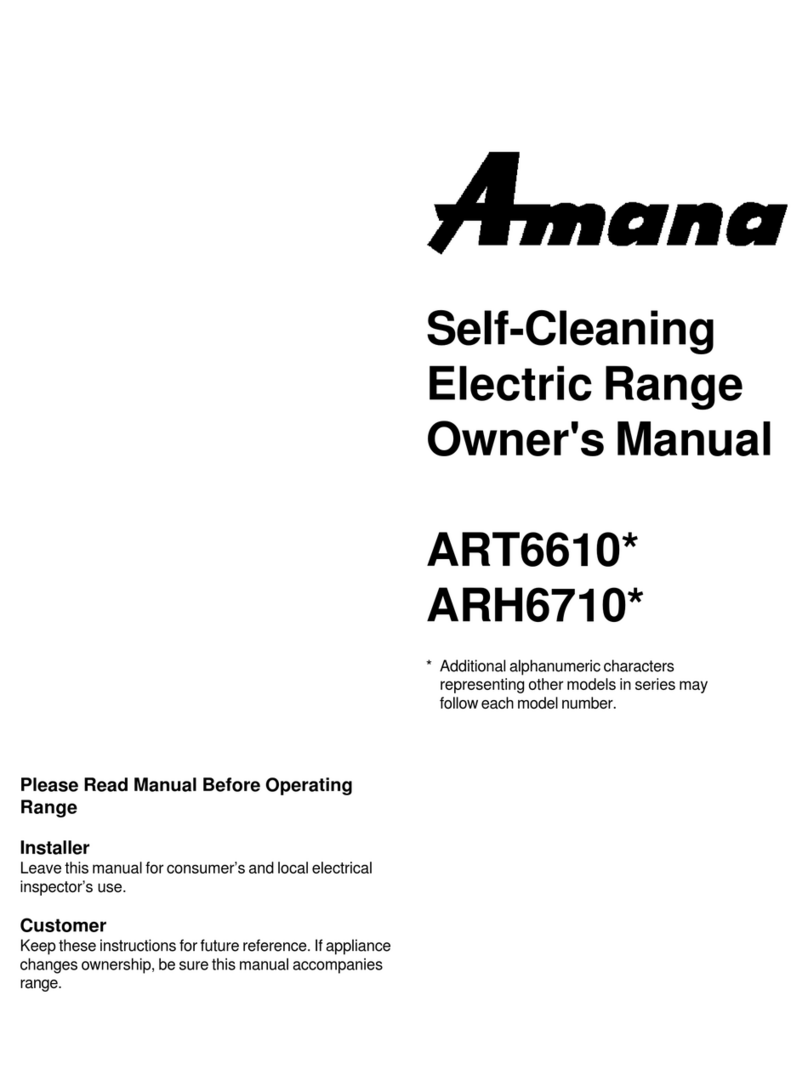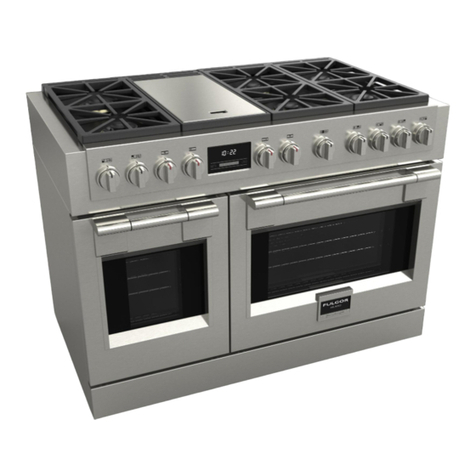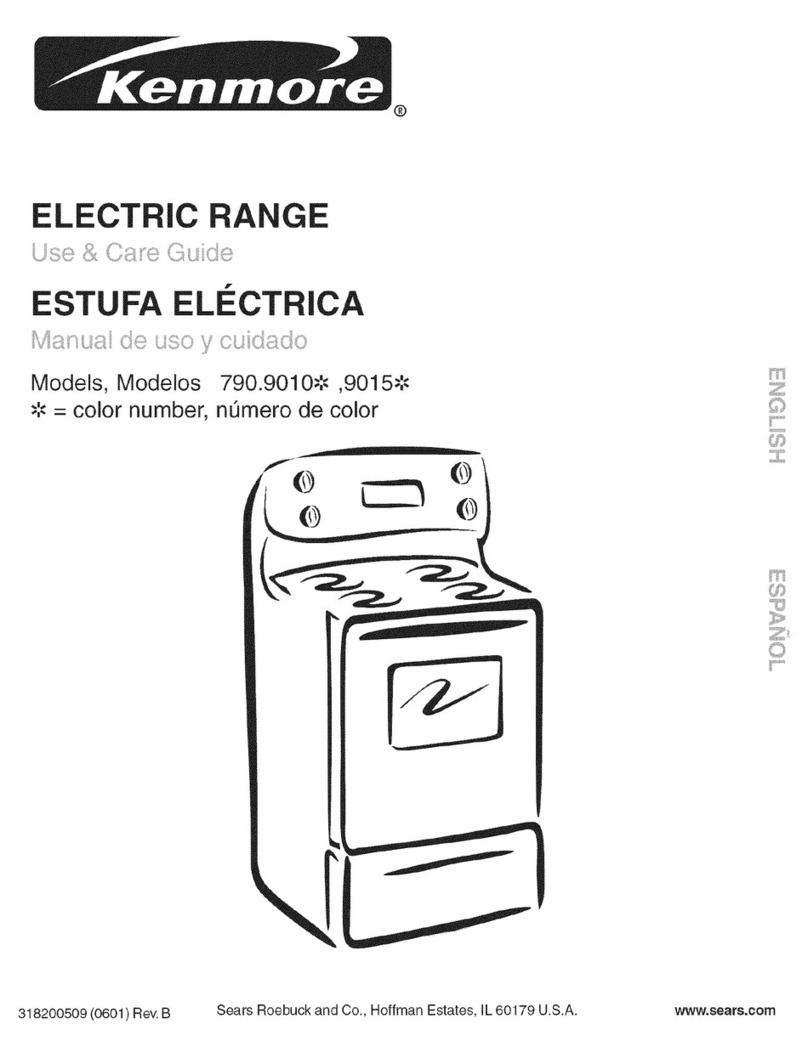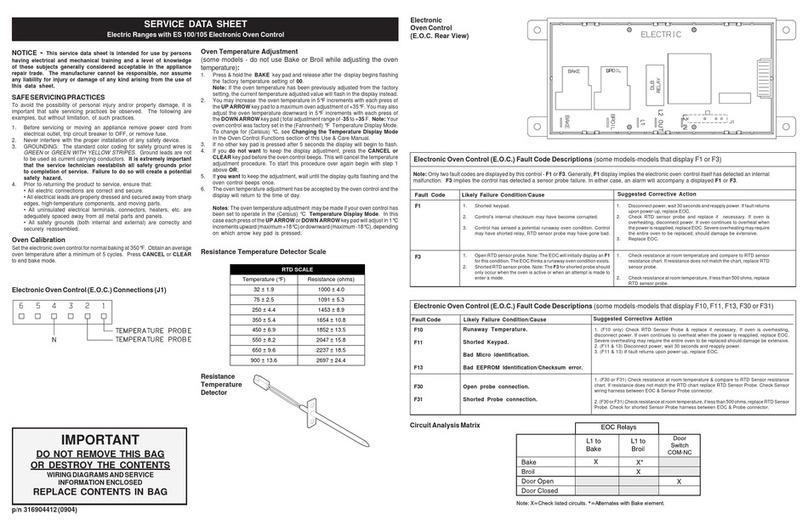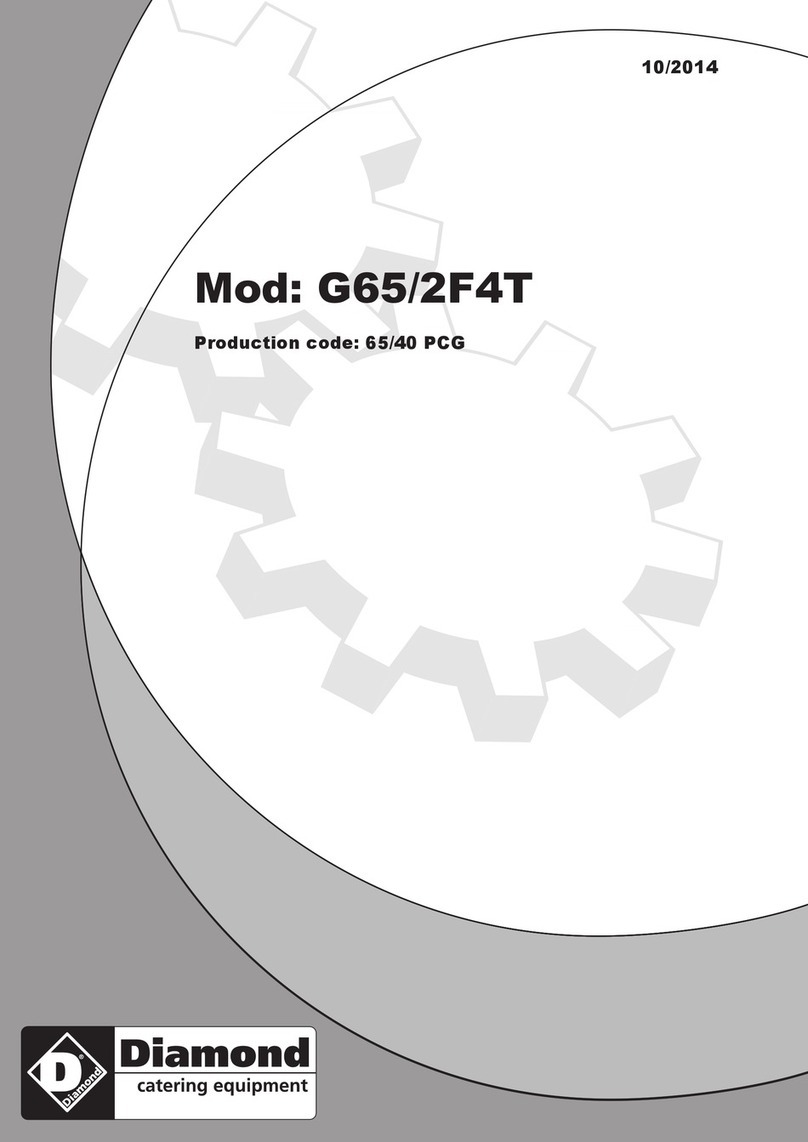xMP©RTANT SAFETY INSTRUCTgONS (continued)
Oven
Stand away from range when
opening oven doon Hot air or
steam which escapes can cause
burns to hands, face and/or
eyes.
*Don't heat unopened food
containers in the oven. Pressure
could buiM up and the container
could burst, causing an injury.
* Keep oven vent duct
unobstructed.
* Keep oven free from grease
buildup.
* Place oven shelf in desired
position while oven is cool. If
shelves must be handled when
hot, do not let pot holder contact
heating units in the oven.
* Pulling out shelf to the
shelf stop is a convenience in
lifting heavy foods. It is also a
precaution against burns from
touching hot surfaces of the
door or oven walls.
When using cooking or
roasting bags in oven, follow
the manufacturer's directions.
oDo not use your oven to dry
newspapers. If overheated, they
can catch fire.
Se_f-Cileaning Oven
*Do not clean door gasket.
The door gasket is essential for a
good seat. Care should be taken
not to rub, damage or move the
gasket.
*Do not use oven cleaners. No
commercial oven cleaner or oven
liner protective coating of any
kind should be used in or around
any part of the oven.
_,Ctean only parts listed in this
Use a_d Care Book.
o _ore selfocieaning t_m oven,
rer_ove br_i_er pan and other
Surface Cooking UniN
Use proper pan size--This
appliance is equipped with one
or more surface units of different
size. Select cookware having flat
_Ilt) ugll
oouoms mrge to cvwt
the surface unit heating element.
Thg* n¢_ nfllnrt_,r¢iT_cl ennkwara
will expose aportion of the
heating element to direct contact
and may result in ignition of
clothing. Proper relationship of
cookware to burner will also
improve efficiency.
*Never leave surface units
unattended at Ngh heat sett_s.
Boiiover causes smoking and
greasy spillovers that may catch
UII lUg.
Be sure drip pans and vent
in place. Their absence during
r,.,_rdrlncr c,n_ld clnrn_c_o r_noe
parts and wiring.
llne drip pans or anywhere in
the oven except as described in
this book. Misuse could result in
a shock, fire hazard or damage
to the range.
* On!y certain types of glass,
glass/ceramic, earthenware or
other glazed containers are
suitable for range-top service;
others may break because Ofthe
sudden change in temperature.
(See section on "Surface
Cooking" for suggestions.)
To m_nimi_e the possibility of
burns, ignition of flammable
materials, and spillage, the
handle of a container should be
turned toward the center of tke
range without extending over
nearby surface units.
oAlways turn surface unit to
_hw_rw rwm_vh_
cookware.
* Keep an eye on foods being
HIGH heats.
*TOavoid the possibility
of aburn or electric shock,
controls for all surface units
_r_ _* _ no,_tlon a_d all
......... Jr- .................
coils are cool before attempting
to remove the unit.
Don't hnmerse or soak
rem_vahle snrfaee unRs. Don't
put them in a dishwasher. Do
not self-dean the surface units
in the oven.
* When flaming foods curler
the hood, turn the fan off. The
fan, if operating, may spread
the flame.
*Fonds for frvim, should be as
dry as possible. Frost on frozen
foods or moisture on fresh foods
can cause hot fat to bubble up
and over sides of pan.
*Use IRfle fat for effective
shallow or deep-fat frying.
Filling the pan too full of fat can
cause spillovers when food is
added.
*If acombination of oils or
fats will be used in frying, stir
together before heating, or as fats
melt slowly.
®Always heat fat slowly, and
watch as it heats.
* Use deep fat thermometer
whenever pos_ble to prevent
overheating fiatbeyond the
smoking point.
AXTII_ r___ _
NSTRUCTIONS

